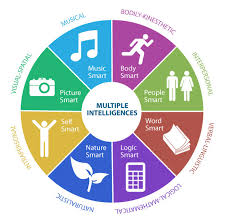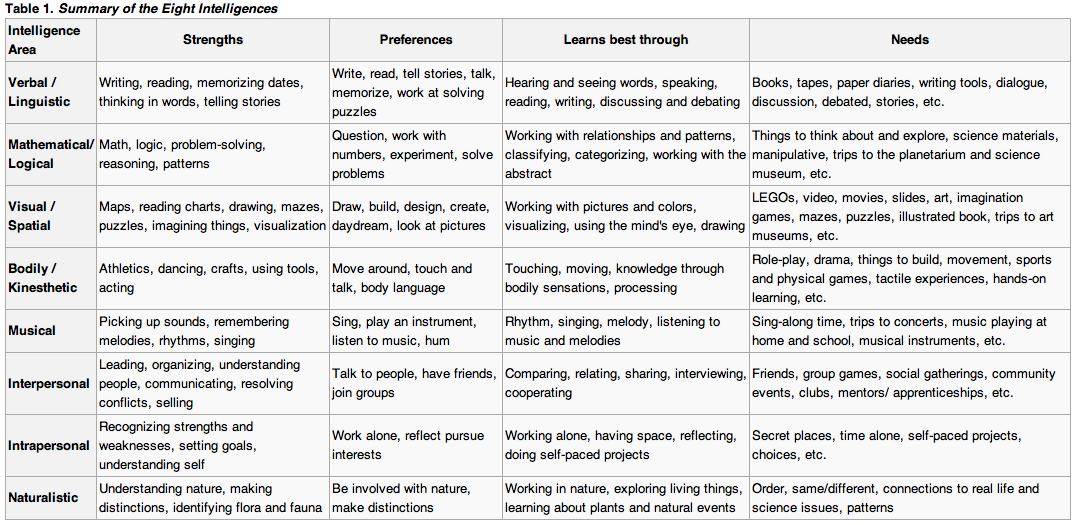
How practical are multiple intelligence activities?
Before I look at how practical these activities are, I first need to understand what is multiple intelligence? Then I can look and see what activities are considered multiple intelligence activities? When asking my students how they know if someone is intelligent, they have varied answers. Some think it is being able to answer any question that is asked, or being able to solve any problem, or even to create a solution to an existing dilemma. However this is not what Gardner meant when he defined multiple intelligence.
In our reading this week, I learned that intelligence as defined by Gardner is “the extent to which students possess different kinds of minds and therefore learn, remember, perform, and understand in different ways”, taking into account a learner’s specific abilities. Interestingly, there is a possible ninth intelligence, although not officially proposed, known as existential intelligence. Defined by Gardner as “the proclivity to pose and ponder questions about life, death, and ultimate realities” (1999).
The next question would be what kinds of activities would benefit students who learn in these ways.
These lead us into a different topic, that of differentiated instruction. The more that I vary my instructional strategies the more students I am able to reach.
Dean, Ceri B.; Hubbell, Elizabeth Ross; Pitler, Howard; Stone, Bj (2012-01-05). Classroom Instruction That Works: Research-Based Strategies for Increasing Student Achievement, 2nd edition, Association for Supervision & Curriculum Development.
Gardner, H (1999) Intelligence Reframed: Multiple Intelligences for the 21st Century. New York. Basic Books.
